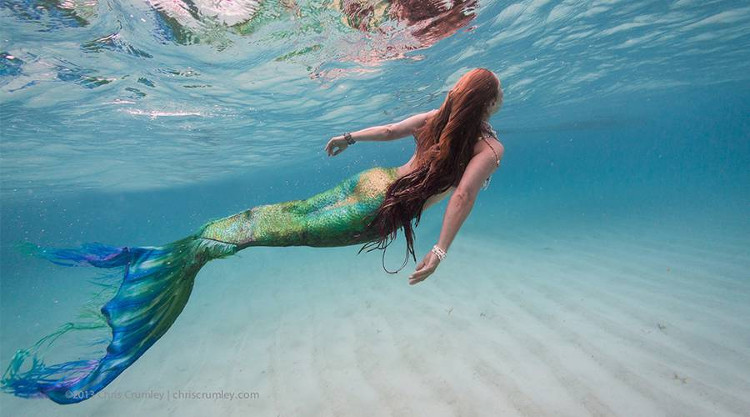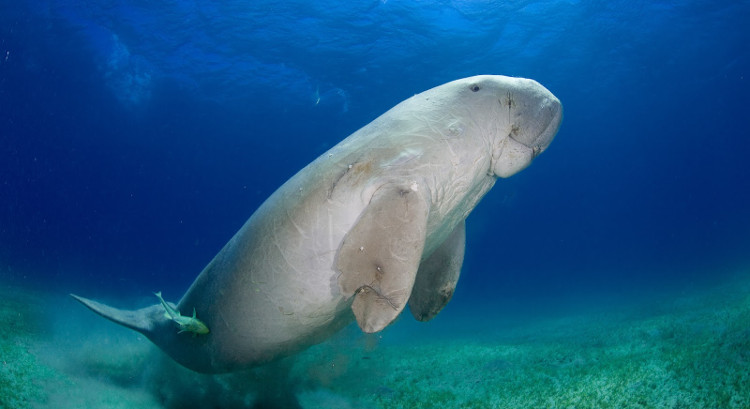The origin of the mermaid under a scientific perspective
Scientists believe that mermaids are just a product of human imagination when they see manatee or dugongs from a distance.
For centuries, people have circulated thrilling stories about fishermen, half-human creatures, half-mysterious fish on the sea, according to Livescience.

The legend of mermaids is very popular in many cultures around the world.(Photo: Livescience)
Fairy tale "One Thousand and One Nights" describes fishmen as "round face, long hair but limbs lying on the belly and tail like fish". The Babylonians carve the god Era or Oannes with beard, crown, and body but from the waist down are fishtail. Many generations of children in the world are no stranger to the fairy-tale Andersen mermaid.
According to scientists, the "mermaid" or "fishman" in the legend is most likely the result of the illusion phenomenon that people often encounter on the vast sea surface.
Seafarers are likely to observe marine animals of the same size as humans such as manatee and dugong , a dolphin in Southeast Asia. These two animals have a tail that is very similar to the "mermaid" tail, while the two front flippers are easy to think of.
Fish legend researchers believe that when observing manatee or dugong at a distance, in the fog or in the moonlight, seafarers may misunderstand that it is a fishman, making the story of life This becomes popular.
In the Middle Ages, the described fish appeared with sea creatures such as whales. This reinforces the scientists' hypothesis that fishers are just a product of our imagination when observing marine creatures of the same size and shape as humans.

Manatee can be a creature that many people mistakenly think about a mermaid.(Photo: Universe).
So far no one has provided convincing evidence of the appearance of fishmen. People in Israel's Kiryat Yam town in 2009 spread rumors about the appearance of a "mermaid" on the beach, with a very clear tail. The town tourist council hung a $ 1 million prize for the first person to take a picture of the "mermaid" , but no one had won the money.
In 2010, the National Oceanic and Atmospheric Administration (USA) also issued a statement denying the existence of fishmen, after the documentary "Detecting the mermaid" was broadcast on Animal Planet, offshore. raise public interest in fishers.
The most convincing evidence of fishmen is the remains of a "mermaid" washed up on the coast in 1222 and are being kept at the temple in Kukuoka, Japan.
The remains of the remains were soaked in sea water for nearly 800 years, so far only a few bones remain. Scientists are also not allowed to access the remains to verify, so the true source of this skeleton is still a big question mark.
- The new question about 'The Mermaid' is true in history
- All things about love from a scientific perspective
- Legend and reality about fishmen
- Mysterious mermaid in the Greenland Sea?
- Secret mummy monkey head, I fish
- Unique mermaid photo set
- The legendary mermaid statue is 100 years old
- Scientific perspective on apocalyptic hypotheses
- Milk looks from a scientific perspective
- Love from a scientific perspective
- The unborn child grows like a mermaid in the womb
- Decode the mermaid phenomenon in real life
 Surprised: Fish that live in the dark ocean still see colors
Surprised: Fish that live in the dark ocean still see colors Japan suddenly caught the creature that caused the earthquake in the legend
Japan suddenly caught the creature that caused the earthquake in the legend A series of gray whale carcasses washed ashore on California's coast
A series of gray whale carcasses washed ashore on California's coast Compare the size of shark species in the world
Compare the size of shark species in the world